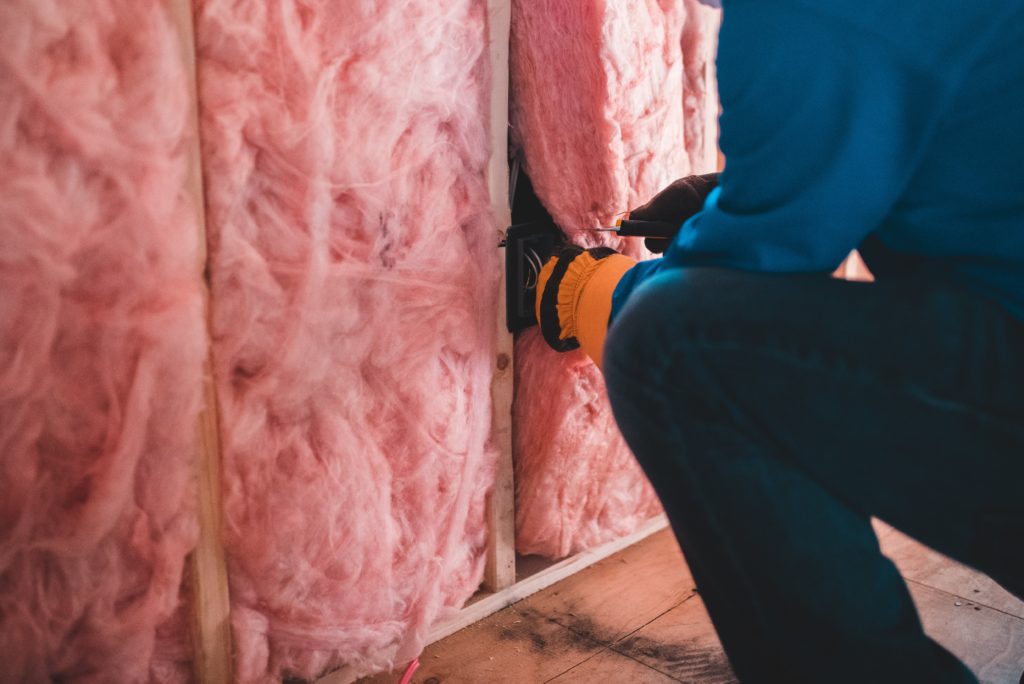The warmer summer months have passed and the cold of Winter is just around the corner. If you’re trying to imagine how you could keep your house warm this Winter, here are some top tips.
Heating your home isn’t just about adding the right heat source. It’s also about how you keep that heat inside your home and stop it escaping. Here are 5 options that could add up to a warmer home in the months ahead.
1. Insulate your house for a warmer home
Insulation is the foundation to a warmer home. Every home should be insulated and the more insulation you can add, the warmer you will be. The basic principle of insulation is to form a barrier that stops heat from escaping your home. It comes in lots of shapes and forms and that makes it versatile and easy to apply in a variety of locations.
Most houses should have insulation in the roof space. The thickness or density of insulation will directly affect its effectiveness so if you’re not sure what’s up there – call in an expert and take some advice.
Modern homes have insulation in the walls and under floors as well. Under floor insulation can be applied to older homes provided you can get under the floors. Wall insulation is more challenging to retrospectively fit but if you’re keen to make a difference to the warmth of your home; it’s certainly worth investigating.
Insulation is a clever solution for your home because it stops heat escaping which keeps your home warmer and therefore reduces the cost of heating your home. That’s smart for you and smart for the environment.
There is funding available for ceiling and underfloor insulation for eligible homeowners. You can find out all the details here: https://energysmart.co.nz/subsidies-and-grants/.
2. Double Glazing
Windows are one of the main areas where heat is lost from a home. If you have lived or do live in an older villa you may be familiar with the light breeze you often get near the window on a windy day. That leaky window with its transfer of air is making it harder to heat your home.
Double glazed windows are sealed, ensuring that air flow does not occur between the different parts of the window. This seal ensures that the air you’re heating inside your home stays put, and there isn’t more cold air added from outside.
Single pane glass windows also lose heat at a faster rate than double or triple glazed windows. Double and Triple Glazing uses a layer of argon gas trapped between panes of glass to reduce the ability of heat to move through the space. That means there’s less heat transfer out of your home so again your home becomes quicker and more efficient to heat.
If you’ve rejected double glazing in the past because it doesn’t suit the character of your home, it’s worth being aware that designs have come a long way. You can now retrofit double glazing or choose it in a variety of styles, making it possible to keep the unique style of your home and be warm at the same time.
3. Window coverings for warmth
Just as adding a second layer of glass can insulate your windows, so can adding a window covering in the form of fabric or wood. It goes without saying that the thicker the window covering, the better the insulating properties.
Adding a window covering isn’t just for insulation. It also needs to look good and add to the appearance of your home. By adding an insulating layer or lining to the window covering of your choice, you can quickly trap warmth in your home and keep the cold at bay.
One thing worth considering is how you can also use your window coverings to keep your windows cool in Summer. Some window coverings like blinds are versatile and can provide shade during the hotter months and keep warmth in during the colder months. Basically the insulating properties work both ways – stopping the movement of heat into or out of your home.
4. Drier air is easier to heat
Adding moisture to your air means an increase to the energy requirements if you want to warm your home. You may not think you’re adding moisture but breathing, cooking, drying laundry inside and showering: all these activities can increase the amount of moisture in your home.
Adding an air filtration system can not only remove pollutants from the air in your home, it also dries your home and the air within it. That makes it much easier to heat the air circulating in your home and ensures that whatever heat source you choose is much more effective.
5. Add a heat source to your home
Choosing the right heat source for your home will ensure that you still enjoy warmth throughout the colder Winter months.
East Coast Plumbing and Gas can help you to install a variety of heat sources in your home. If you’re looking for a single source of heat then gas is versatile and quick to perform. You can heat your room at the touch of a button without the hard work of a wood fire while enjoying all of the pleasure of a living flame. Gas heaters come in the latest designs and you can explore your options today by coming to our showroom and seeing them on display.
We are also experts in designing and installing central heating systems. Our aim is to deliver a system for you that uses the heat source you prefer along with the latest technology to efficiently and effectively heat your whole home.
Central heating is an excellent way to add value to your home. Who doesn’t love waking up in a warm bedroom in Winter and coming home to a warm and welcoming house that’s been heated to the temperature that you specify?
Read more about the different types of central heating available here or contact us today and we can discuss the best solution for you.
However you choose to add warmth to your home this Winter, there are a wide range of options available to help you stay cosy, no matter what the weather throws at us. If you’re ready to look forward to Winter rather than dreading the colder months, contact East Coast Plumbing and Gas today and ask us how we can help you to heat your home.


